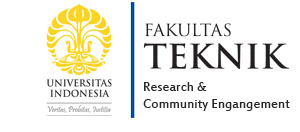| Authors | 8. E. Kusrini, N. Sofyan, N. Suwartha, G. Yesya, C.R. Priad |
|---|---|
| Publication Name | Journal of Rare Earths |
| Abstract | Engineering of chitosan by praseodymium has been investigated to improve the adsorption properties as well as physical characteristics of chitosan. Modification of chitosan changes the original properties of chitosan so that it can be more suitable for adsorption of fluoride ions. In this study, chitosan-praseodymium (Chi-Pr) was synthesized by impregnation method. The Chi-Pr complex was characterized by scanning electron microscopic-energy dispersive X-ray spectroscopy (SEM-EDX), Fourier transform infrared (FTIR) and employed as an adsorbent for removal of fluorides ions from water in the batch system. The variables such as contact time, concentration of Pr, adsorbent dose, initial concentration of fluoride ions, and competitor anions were studied. The adsorption efficiency of fluoride ions (?) with increasing Pr loading into chitosan (5 wt.%, 10 wt.%, 15 wt.%, 20 wt.% and 25 wt.%) were 35.5%, 56.1%, 72.0%, 68.5% and 62.5%, respectively. The Chi-Pr (15 wt.%) complex had the highest fluoride removal efficiency (72.0%). The experimental data fitted well to the Langmuir isotherm with maximum adsorption capacity (qmax) of 15.87 mg/g and an equilibrium constant (kL) of 0.15 mg. Kinetic study revealed that the adsorption of fluoride ions from water followed pseudo-second-order model with a maximum adsorption capacity (q2) of 8.20 mg/g and a rate constant (k2) of 0.01 g/mg·min. Adsorption efficiency of fluoride ions in the simulated drinking water was diminished with the changes in pH levels. The presence of Pr3+ in chitosan increased chitosan's performance as an adsorbent for adsorption of fluoride ions. |
| Publisher | The Metallurgical Industry Press |
| ISSN | 10020721 |
| Page | 1104-1113 |
| Volume | 33 |
| Impact Factor (JCR) | --- |
| SJR | 0.606 |
| Ranking Quartile | Q2 |
| Website | http://www.sciencedirect.com/science/article/pii/S1002072114605330 |
Chitosan-Praseodymium Complex for Adsorption of Fluoride Ions from Water
LATEST POST
CALL FOR PROPOSAL: Penerimaan Hibah Osaka Gas Tahun 2025
6 Dosen Fakultas Teknik Universitas Indonesia Catatkan 8 Paten
Mahasiswa FTUI Kaji Potensi Hidrogen Alami di Sulawesi, Didorong Jadi Rujukan Kebijakan Nasional
Mahasiswa FTUI teliti potensi hidrogen geologis pertama di Indonesia
Dosen Fakultas Teknik UI ciptakan alat pemurnian air ramah lingkungan "Arofah"
POPULAR NEWS
LATEST VIDEOS
LOGIN






